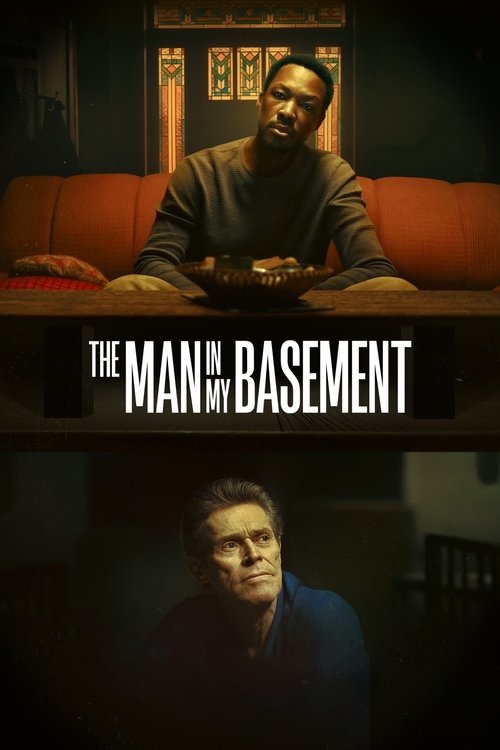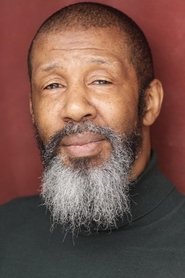
Ask Your Own Question
What is the plot?
Mikael Blomkvist accepts a contract from Henrik Vanger to investigate the 1966 disappearance of Henrik's great-niece Harriet Vanger. Henrik promises Blomkvist a substantial fee and the assistance of his vast archives; in return, Henrik asks that Blomkvist pursue Henrik's long-running suspicion that someone in the Vanger family murdered Harriet. Henrik also tells Blomkvist that, if he succeeds, Henrik will use his influence to help Blomkvist bring down Hans-Erik Wennerstrom, the industrialist who recently engineered Blomkvist's libel conviction. Blomkvist hires private investigator Lisbeth Salander to assist him in the inquiry; he contracts her work for the money and the meticulous skills she brings to combing records and following leads.
Blomkvist and Salander begin assembling a chronology of violent sexual crimes connected to the Vanger family and the island community around Hedestad. They trace a string of rapes and slayings that stretch from 1948 through 1967, and they establish that Harriet disappeared in 1966. Blomkvist concentrates on interviewing relatives and examining family records while Salander hacks into archives and runs video surveillance and background checks. While they work side by side, Salander--the reserved, private investigator with a dangerous past--grows emotionally attached to Blomkvist; her feelings deepen as she observes his tenacity and moral demands.
Their investigation identifies a pattern of brutality centered on two generations of the Vanger family. Blomkvist uncovers that Martin Vanger, one of the family's sons, is connected to multiple murders. Records and testimonies show that Martin's father, Gottfried Vanger, forced Martin to observe his sexual assaults; Gottfried habitually brutalized women and taught Martin methods of torture, rape, and killing. The archives show murders committed across decades; some crimes were committed solely by Gottfried, others with Martin present, and others by Martin acting on his own after learning his father's techniques. Official records indicate that Gottfried died by drowning in 1965, twelve months before Harriet vanished. Forensic documents and old witness statements establish that Martin has a long history of stalking women and of building mechanical devices and chambers used to immobilize victims.
Blomkvist follows a thread of recent surveillance evidence that suggests someone has been watching him. Security footage reveals Martin near Blomkvist's remote cabin on the island, snooping in the vicinity and possibly casing the place. Concerned about Martin's interest in Blomkvist's movements, Salander goes to Martin's estate to search for more direct evidence. She rides to his property alone and enters the house while he is away; the structure is stately but holds a darker rear section. In the basement she discovers a locked chamber--a cement-floored room outfitted with straps, clamps, and devices designed to restrain a human body, along with implements used to inflict pain and blood-stained material that indicates violent use. The concrete smells faintly of disinfectant and old iron.
At that same moment, elsewhere on the estate, Martin confronts Blomkvist, whom he has taken prisoner. Martin has forced Blomkvist into the basement chamber; the journalist lies bound and gagged on a table, weak from wounds and blood loss. Martin approaches with a knife and raises it to end Blomkvist's life. Salander, arriving through a side doorway after cutting a padlock, sees Martin's silhouette and the table. Rather than hesitate, she seizes a nearby object--a golf club she finds leaned against the wall--and swings. Her blow connects solidly with Martin's jaw, knocking him backward and loosening his grip on the knife. Martin staggers, bleeding from his mouth and reeling from the strike. Salander frees Blomkvist from the straps and they move toward the exit. Martin flees to his car.
Blomkvist, still injured, staggers after Martin and is able to get into Martin's line of sight before Martin slams his vehicle into gear. Salander pursues on her motorcycle, accelerating down the tree-lined driveway. Martin drives aggressively, attempting to force her off the road; he tries to swerve in front of the motorcycle to block her. In the scramble, Martin loses control of his vehicle on a curve, the car overturns, and fuel lines rupture. The vehicle collides with a tree and bursts into flames within seconds. Blomkvist and Salander stand back until emergency flashes die down; the car is consumed by fire and Martin Vanger dies inside the wreckage, immolated by the conflagration. The explosion and subsequent inferno destroy physical traces of most of the devices in the vehicle and any immediate linking evidence. No witness places Blomkvist or Salander at the scene in a way that will incriminate them, and the Vanger family is immediately enveloped in the kind of media attention Henrik wants to avoid. Henrik tells Blomkvist and Salander that revealing Martin's role as a serial killer would drag the Vanger name through scandal and devastate a local community; after weighing the legal risks and the absence of forensic proof connecting Martin's death to their confrontation, Blomkvist and Salander choose to keep Martin's violent secrets contained rather than force a public, humiliating inquest.
With Martin dead, Blomkvist concentrates on the core mystery of Harriet's disappearance. He studies travel records, name changes, and immigration files, and eventually uncovers that Harriet disappeared from public view by assuming the identity of a cousin. The papers and tracing lead to London, where Blomkvist locates a woman living under the name Anita, a name connected to the Vanger clan. He discovers that the real Anita had earlier perished in a car accident roughly twenty years before Harriet's disappearance; the death allowed Harriet to adopt Anita's identity and to leave Sweden without attracting notice. When Blomkvist tracks Harriet--now using Anita's name--in London and reveals Martin's death, she responds by detailing her own history of abuse and the specific events that led her to flee.
Harriet sits with Blomkvist and describes the most violent episodes perpetrated by her father and by her brother. She recalls that her father, Gottfried, had become so intoxicated on one night that she was able to overpower him. Harriet narrates how she wrenched an oar from the nearby shore and used it to submerge him in the family's lake, holding him under until he drowned. She tells Blomkvist that the act was born of self-preservation and the need to end cycles of abuse. Harriet explains that, after her father's death, she spent months hiding her action and then took the opportunity to disappear under her cousin's identity, leaving Hedestad and the Vanger family behind so she could live in anonymity in London.
Back in Sweden, Henrik Vanger receives Harriet when she travels to Hedestad to see him. She walks through the family compound to Henrik's study and they speak in private. Henrik acknowledges that he had arranged the investigation primarily to find Harriet and to learn who killed her; when Blomkvist returns to Henrik with his findings about Martin and with confirmation that Harriet is alive, Henrik accepts Harriet's account without publicly accusing anyone else. Henrik offers Blomkvist limited assistance in exposing Wennerstrom, but the information Henrik hands over is insufficient to topple Wennerstrom's empire. Blomkvist presses for proof and Henrik's papers prove only marginally useful.
Salander intervenes where Henrik's documents fall short. Using her technical skills, she infiltrates Wennerstrom's financial records and communications. She obtains bank statements, offshore accounts, and transaction records that tie Wennerstrom to illegal activity and to corporate fraud. Salander then compiles and transfers these files to Blomkvist and, through the journalist's magazine and legal channels he can access, makes the material public. The exposure devastates Wennerstrom's reputation and triggers legal authorities and financial regulators to move against him. Public revelations about Wennerstrom's crimes follow, and he is pursued by prosecutors and the press.
Shortly after the revelations become public, Hans-Erik Wennerstrom is murdered off-screen. Reports indicate that Wennerstrom is killed--details are sparse in the initial accounts, and investigators later describe his death as a homicide discovered in an urban setting far from Hedestad. No credible link is made in public records between Wennerstrom's murder and Blomkvist or Salander; the killing is recorded as a separate event, and authorities focus on finding a perpetrator among Wennerstrom's numerous adversaries. Salander's hacking and the material she supplied to Blomkvist are acknowledged publicly as precipitating the legal and financial collapse of Wennerstrom's operations, but the physical act that ends Wennerstrom's life is not connected to them in official reports.
Following the conclusion of the Wennerstrom affair, life resumes with private consequences. Blomkvist returns to his work as a journalist and to the magazine he edits, his public reputation restored. Salander, meanwhile, quietly purchases a leather jacket for Blomkvist as a Christmas gift, paying in cash and wrapping it plainly. She brings the present to town on the appointed holiday, hoping to surprise him. Instead, she sees him walking arm in arm with Erika Berger, a woman who has been Blomkvist's occasional lover and a senior figure connected to his professional life. Salander watches them speak and exchange a kiss; the sight hurts her. She takes the boxed jacket down to a dumpster behind a shop, opens the lid, and drops the neatly wrapped gift into the trash. Without making contact with Blomkvist, Salander mounts her motorcycle and rides away from the harbor town into the dusk.
In the final scenes, Harriet sits with Henrik at the Vanger estate; an elderly Henrik listens as Harriet, now free of the need for concealment, recounts in measured detail how she killed Gottfried by forcing him beneath the water with an oar and then altered her identity. Henrik absorbs the confession without pressing for legal action, and the family's response to the truth remains largely private. Blomkvist continues his work as a public figure and journalist, his name cleared of the libel conviction Wennerstrom once pressured upon him. Salander, isolated on her motorcycle, remains at a distance from the community she has helped to save, nursing her unspoken love for Blomkvist. Martin Vanger is dead in the overturned, burning car; Gottfried Vanger is dead by drowning in the lake at Hedestad; Hans-Erik Wennerstrom is dead by homicide discovered and reported after Salander's exposures; Harriet Vanger is alive and has returned to face her uncle Henrik; Mikael Blomkvist continues his journalism; Lisbeth Salander departs, keeping the secrets she and Blomkvist have chosen to leave buried. The story closes on Salander riding away from the town, her motorcycle's tail light disappearing along a narrow coastal road as winter closes in.
What is the ending?
At the end of The Man in My Basement (2025), Charles Blakey confronts and confesses the dark secret that has haunted him: he neglected and effectively caused the death of his abusive uncle Brent. This confession leads Charles to a painful but necessary acceptance of his past, symbolized by his visit to his uncle's room and his recognition of the importance of community and compassion. The film closes with Charles beginning to reconcile with his guilt and the isolation he has endured, while Anniston Bennet, the mysterious man renting the basement, remains a catalyst for Charles's emotional journey.
The ending unfolds in a series of emotionally charged scenes that reveal Charles's internal struggle and ultimate confrontation with his past.
-
Charles's Confession: After enduring the strange and tense presence of Anniston Bennet in his basement, Charles finally opens up about his deepest secret. He admits that he killed his uncle Brent--not by direct violence, but through neglect. Brent was abusive throughout Charles's life, and after his mother died and Brent fell ill, Charles refused to care for him despite his cries for help. Eventually, Brent's suffering ended in silence, and Charles buried him, carrying the weight of this guilt ever since.
-
Visiting the Uncle's Room: Following this confession, Charles musters the courage to enter his uncle's room, a space filled with haunting memories. The room is a physical representation of Charles's trauma and unresolved feelings. The presence of a dog's image, seen multiple times throughout the film, appears here as well--possibly symbolizing loyalty, innocence, or a reminder of Charles's childhood and his only true companion during those dark times.
-
Encounter with Chastity: Charles then notices his neighbor Chastity, who is bedridden and barely responsive. This encounter mirrors his uncle's isolation and neglect, highlighting the pain of loneliness and the human need for connection. When Irene, another character, mentions that Chastity hasn't had a visitor in three years, Charles realizes the profound impact of isolation and the importance of community.
-
Acceptance and Resolution: Through these experiences, Charles begins to accept his wrongdoing instead of denying it. He understands that while his uncle was cruel, neglect was not justified. This acceptance marks a turning point for Charles, who starts to see the value in small acts of kindness and the need to reconnect with others.
-
Anniston's Role: Throughout these final scenes, Anniston Bennet remains a mysterious figure who has rented the basement to embark on a "spiritual journey." His presence and philosophical conversations push Charles to confront his own demons. Anniston's fate is left ambiguous, but he serves as a catalyst for Charles's transformation.
-
Fate of Main Characters: Charles ends the film on a path toward healing, having faced his past and begun to embrace community and compassion. Anniston's role as the enigmatic tenant concludes with his mission seemingly fulfilled, leaving Charles to move forward. Other characters like Chastity and Irene serve to underscore the themes of isolation and connection but do not have detailed fates revealed at the film's end.
This ending scene by scene reveals a narrative focused on guilt, redemption, and the human need for connection, with Charles's journey from denial to acceptance at its emotional core.
Is there a post-credit scene?
The movie The Man in My Basement (2025) does not have a post-credit scene. The film's ending focuses on the psychological and moral resolution between the two main characters, Charles and Anniston Bennet, with a haunting final shot that suggests ongoing psychological fallout, but no additional scene appears after the credits.
The final moments emphasize Charles's personal growth and spiritual liberation as he rejects Bennet's toxic control, while Bennet remains unchanged in his cynical worldview. This ending is designed to leave a lasting impression without extending into a post-credit sequence.
What is the nature of the relationship between Charles Blakey and Anniston Bennet in the film?
Charles Blakey rents his basement to Anniston Bennet, a mysterious white businessman who ends up living in a cell in Charles's basement. Their relationship is complex and tense, with Charles forced to care for Anniston and cater to his needs, creating a dynamic where Charles becomes a servant despite Anniston being confined. This relationship drives much of the film's tension and character development.
What is the significance of Charles's secret about his uncle Brent?
Charles's secret is that he killed his abusive uncle Brent by neglecting him when he was sick, leading to Brent's death. This secret haunts Charles, causing anxiety and nightmares. The revelation of this secret is central to Charles's emotional journey and his eventual acceptance of his past and the importance of community and compassion.
How does the film portray Charles's personal struggles and growth?
Charles is depicted as a man stuck in a rut, facing financial troubles and emotional turmoil. Through his interactions with Anniston and confronting his past, including his secret about his uncle, Charles begins to reconcile with his history and himself. The film shows his gradual realization of the need for connection and service to others, marking his personal growth.
What role does the neighbor Chastity play in the story?
Chastity is Charles's neighbor who is confined to a bed and barely responsive, having not seen a guest for three years. She serves as a reminder to Charles of his uncle Brent's isolation and neglect, highlighting themes of loneliness and the human need for community, which influences Charles's reflections on his own actions and relationships.
What is the significance of the dog imagery in the film?
The recurring image of a dog in the film symbolizes Charles's childhood companion and possibly represents Anniston, who once referred to himself as a dog waiting to be fed. This imagery underscores themes of loyalty, servitude, and companionship, reflecting Charles's emotional state and his relationship with Anniston.
Is this family friendly?
The movie The Man in My Basement (2025) is not family friendly; it is rated R for language, sexual content, graphic nudity, and some violent content.
Potentially objectionable or upsetting aspects for children or sensitive viewers include:
- Strong language throughout the film.
- Sexual content and graphic nudity, which may be explicit and unsuitable for younger audiences.
- Violent content, though not described as extreme, is present and may be disturbing.
- The film explores heavy themes such as racial power dynamics, poverty, and identity, which are presented in a suspenseful and sometimes unsettling manner.
- The tone is described as slow-burning and intense, with some scenes involving psychological tension and disturbing performances.
Overall, the film is designed for mature audiences and contains material that could be upsetting or inappropriate for children or sensitive individuals.


































